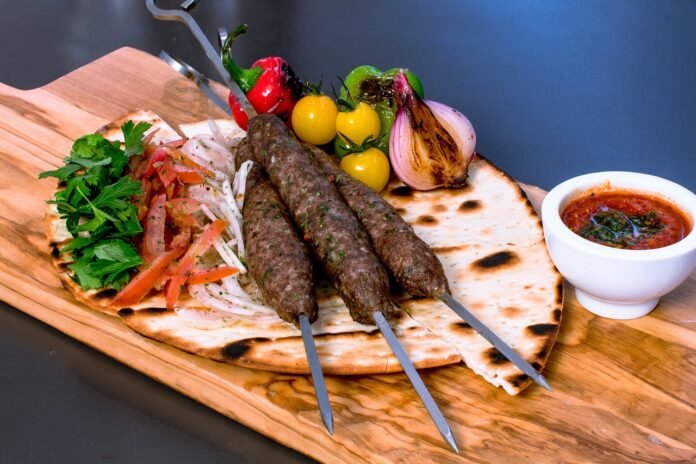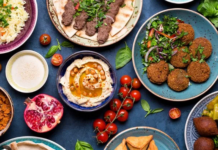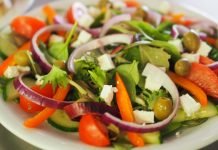Romania is a treasure trove of culinary delights, offering a rich tapestry of flavors that reflect its history and cultural diversity. Influenced by neighboring cuisines like Turkish, Hungarian, and Slavic, Romanian food is hearty, flavorful, and deeply rooted in tradition. For food lovers, exploring the country’s dishes is a journey in itself, revealing the soul of its people through their recipes and hospitality. Whether you’re visiting bustling cities, quaint villages, or countryside markets, Romania’s cuisine is sure to leave a lasting impression. If you’re planning a tour to Romania here’s what you need to try.
Table of Contents
Sarmale: the heart of romanian cuisine
At the center of Romanian culinary tradition is sarmale, a dish of cabbage rolls stuffed with a mixture of minced pork, rice, and spices. Cooked slowly in a rich tomato and dill sauce, sarmale is a comforting staple often served during holidays, weddings, and family gatherings. It’s typically accompanied by mamaliga (polenta) and a dollop of sour cream, making it a dish that perfectly captures Romania’s love for simple, satisfying food.
Mici: a grilled favorite
If there’s one dish that unites all Romanians, it’s mici. These grilled ground meat rolls, made from a blend of beef, lamb, and pork seasoned with garlic and spices, are a must-try for visitors. Served hot off the grill with mustard and a slice of bread, mici are a popular choice for barbecues, festivals, and roadside eateries. Their smoky aroma and juicy texture make them a highlight of Romanian street food.
Ciorba: soups with a tangy twist
Romania’s love for soups is evident in its wide variety of ciorbă, a type of sour soup flavored with bors (fermented wheat bran) or lemon juice. Favorites include ciorbă de burtă (tripe soup), known for its creamy broth and garlicky kick, and ciorbă de perișoare (meatball soup), a hearty option loved by locals. These soups are not only delicious but also a comforting way to start any Romanian meal.
Mamaliga: a staple of rural Romania
No Romanian table is complete without mamaliga, a cornmeal porridge similar to polenta. Often served as a side dish, it pairs beautifully with stews, grilled meats, and cheeses. In rural areas, mamaliga is a beloved staple, representing the simplicity and resourcefulness of Romanian cooking. For a traditional experience, try it topped with fresh cheese and sour cream or alongside a fried egg.
Placinte and covrigi: baked delights
Romania’s baked goods are a treat for anyone with a sweet tooth. Plăcinte, a type of pastry filled with cheese, apples, or jam, are perfect for a quick snack or dessert. These golden, flaky pastries can be found in bakeries and markets across the country.
Another favorite is covrigi, Romania’s version of a pretzel. Coated in sesame or poppy seeds, covrigi are a popular street food, often enjoyed warm and fresh from roadside stalls. Their soft, chewy texture makes them an irresistible snack.
Cozonac and papanasi: sweet endings
Romania’s desserts are as delightful as its savory dishes. Cozonac, a sweet bread filled with walnuts, poppy seeds, or cocoa, is traditionally prepared for Easter and Christmas but is enjoyed year-round by locals. Its rich, fluffy texture and aromatic filling make it a favorite among visitors.
For a dessert that’s uniquely Romanian, try papanasi. These fried or boiled doughnuts, topped with sour cream and fruit jam, are a decadent way to end any meal. Their combination of crispy exterior and soft, airy center is a crowd-pleaser that showcases the creativity of Romanian cuisine.
Local drinks to complement the meal
Romania’s beverages are the perfect accompaniment to its food. Țuică, a traditional plum brandy, is often served as an aperitif and is a staple at social gatherings. For a milder option, Romanian wines are gaining international recognition, with regions like Dealu Mare and Cotnari producing excellent reds and whites.
If you prefer non-alcoholic drinks, try socată, a refreshing elderflower lemonade made from fresh flowers, sugar, and lemon. It’s a homemade favorite, especially during the warmer months.
Where to experience authentic romanian cuisine
The best way to experience Romanian cuisine is by visiting local restaurants, markets, and rural guesthouses. In cities like Bucharest, Cluj-Napoca, and Brașov, you’ll find both traditional eateries and modern interpretations of classic dishes. Rural areas, particularly in regions like Maramureș and Transylvania, offer a chance to enjoy home-cooked meals made with fresh, locally sourced ingredients.
Seasonal food festivals, such as the Sibiu International Culinary Festival, provide an opportunity to sample regional specialties and interact with local chefs and artisans.
Why romanian cuisine deserves a place on your plate
Romanian cuisine is a celebration of tradition, creativity, and community. Its bold flavors, hearty portions, and comforting dishes reflect the country’s agricultural roots and diverse cultural influences. For food lovers, exploring Romania’s culinary scene is an unforgettable experience that goes beyond taste, offering a deeper connection to its history and way of life. Whether you’re savoring a plate of sarmale, enjoying the tangy warmth of ciorbă, or indulging in a slice of cozonac, Romania’s food will leave you craving more.



























